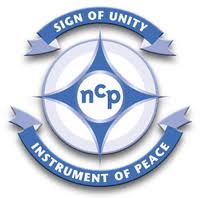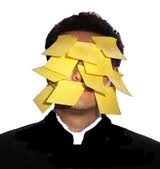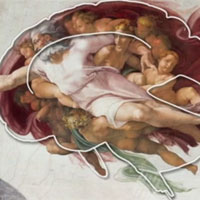The current edition of The Swag reproduces a blog post by Fr Norm Langenbrunner, one of the founding members of the newly formed Association of United States Catholic Priests.
The AUSCP styles itself as an association of ‘Vatican II priests’ who wish to keep alive the Spirit of the Council. By way of clarification, Fr Norm relates in his post the content of a talk he heard at a recent AUSCP regional meeting:
In his presentation Father Bacik clarified the difference between Vatican II priests and JPII priests under two operative models of priesthood: servant/leader (inspired by Vatican II) or spiritual father (inspired by Pope John Paul II).
The servant/leader model tends to see a priest in terms of ministry shared with the laity, of witness to social justice issues, of exploring how the Gospel is to be translated into today’s world.
The spiritual father model tends to see a priest in terms of directing the laity in their service to the Church, of piety in prayer, of maintaining orthodoxy.
Bearing in mind that I didn’t have access to the actual text of Fr Jim Bacik’s talk, and Fr Norm wasn’t attempting to reproduce Fr Bacik’s talk in any detail, I shook my head as I read these paragraphs.
I consider myself a ‘JPII priest.’ John Paul was still pope when I discerned a priestly vocation and entered the seminary, and his writings and spirituality have had a big influence on me. Nonetheless, although I happily identify with piety in prayer and with orthodoxy, I certainly don’t pretend to “direct the laity in their service to the Church.” That’s a brand of clericalism which I’ll always reject. I suspect most ‘JPII priests’ do likewise.
Knowing your adversary
It’s never an easy thing to faithfully describe an adversarial position. I’ve failed at it myself. People sometimes ask me why I wear a clerical collar, and why many other priests don’t wear the clerical collar. My answer was always thoughtful and charitable, but for a long time it was wrong. I misread the motives of the older generations of priests who eschew the collar. I realised that when I asked a priest whom I respect why he had taken off the collar. His answer startled me, because his motivation to hang up the collar was identical to my motivation to take it up again: “It opens doors.” That’s not a reason I had attributed.
Because I get it wrong myself, I am patient with people who misrepresent an adversarial position. Misunderstanding one’s adversary is not on its own sufficient grounds to discount a voice, which is typically more authoritative when expressing more sympathetic positions. I persevered with Fr Norm’s article, and the rest of The Swag, for the insight it can offer on “Vatican II priests.” What are they thinking? What are they feeling? I did this, not only because they are my brother priests and it’s good to take an interest in family, but also because this past week, I attended the NCP Convention in Warrnambool.
Warrnambool 2012
I like to think I’m open minded, and that I went into the convention with a positive attitude. One of my favourite quotes comes from James Joyce’s Finnegans Wake:
Catholic means, ‘Here comes everybody.’
I can deal with the fact that I disagree with other priests on many things. Nonetheless, walking into the convention room that first evening, I was very tentative. To my mind, The Swag is often beyond the pale, and the NCP excessively negative. Apart from that, any large clerical gathering can become something of a minefield. An old saying — often repeated by priests — came to mind:

Priests are like manure. Grouped together they produce hot air and bad smells; spread out they do a lot of good.
At best, I expected to receive deeper insight into the minds and hearts of self-styled “Vatican II priests,” while enduring unfair and inaccurate characterisations of my own generation.
But I received much more than that. I received the hospitality of priests who were sincere in their welcome, and quite willing to engage. And in the keynote addresses by Fr Timothy Radcliffe I received universal insights into the Church and the world. Radcliffe showed himself to be not only a clear and deep thinker, but someone who is able to understand and express his adversaries’ positions as well as his own. He set the tone for a convention which was not pessimistic or self-obsessed, but hopeful and supernatural in its outlook.
My differences with many in the NCP remain. I think I may have cast the sole dissenting vote on one motion. (I didn’t look around at the show of hands.) But all Catholic priests share a lot in common. I learnt a lot at the convention — from its speakers, and from its attendees. And I enjoyed the week immensely.
In many ways, I was more “at home” at last month’s ACCC Conference. But I felt a welcome guest at the NCP Convention, and I will go again. I recommend it.






Dear Father,
This morning I was reading Jacues Maritain on ‘the world’, where he wrote, “The world is a closed field which belongs to God by right of creation; to the devil by right of conquest, because of sin; to Christ by right of victory over the conqueror, because of the Passion.”. This sentence followed a long series of quotations from the NT concerning ‘the world’. It is the battle of good and evil for the world that is focus of the Gospel according to Maritain’s understanding of the NT rather than “exploring how the Gospel is to be translated into today’s world”.
In Christo,
Anthony Bidgood
That’s very interesting Anthony. Thank you. I’ll read up on it some more.
Fr Norm’s blog and the current issue of the Swag in my humble opinion are both best described as the same old (here insert description of what is pictured in Fr John’s latest post).
Dear Mu
I humbly request that you consider referring to my blog as fertilizer. I’d like to think it makes things grow as well as cause a stink.
Norm
Here in Oz, Fr Norm, we use the expression “bulldust” in this particular context to describe not something useful like fertiliser, but just a waste product. Modernism, be it ever so subtle, is still modernism and unutterably dreary.
I agree with Fr John. I enjoyed the conference, and I too will go again. It was a surprise to me. Honestly I did not expect to enjoy much of it. And I had plans to escape. I thought that a good bit of it would be bitter, negative, unhappy stuff. I now confess this as a bias on my part. I am a bit wiser about myself. Disappointments and regrets were sometimes expressed. But everything was reasoned, charitable, sincere and open to other opinions. I left feeling pretty proud of the priests of Australia.
Dear Fr. John, keep on wearing your collar, it shows that you are proud of your vocation as a Priest. Priests who do not wear their collar or habit are somewhat ashamed of their vocation and have had bad formation as a seminarian, they need much prayer to help them better understand the reason God called them. The reasons for wearing the collar are numerous. Here is a link you may find helpful http://www.courageouspriest.com/23-reasons-why-a-priest-should-wear-his-collar
Cathy, the ‘collar’ is merely an external sign of priesthood. It does not determine whether or not one is ashamed or proud of his vocation. Some who wear it, do so authentically and naturally. Some who wear it do so pompously and superficially.
Similarly, those who do not choose to wear a collar can also fall into these categories.
One’s true priesthood comes from the heart, a heart immersed in the divine: Father, Son, and Holy Spirit. As long as that is intact then collars, vestments, and other accoutrements remain as they should: as non-essential externals.
Jesus was clear about the dangers of parading about in ‘broad phylacteries’ and ‘long tassels’, and of focusing on the externals:
“Woe to you scribes and Pharisees, hypocrites! for you cleanse the outside of the cup and of the plate, but inside you are full of extortion and rapacity … first cleanse the inside of the cup and plate, then the outside also may be clean.” (Matt 23:25-26)
Regards,
Fr Peter Day
Archdiocese of Canberra and Goulburn
Fr. Peter Day, I agree with you that a priest is always a priest no matter what he wears or does, for a Preists is always a Priest in the line of Melchizedek. However, Preists who live in countrys around the world who are persecuted and have a life of hardship put some of our Australian Catholics Priests to shame as they wear their collar and are easily identified by those who need help. I agree that to parade about is not very humble nor pius, but to completely erase the use of a habit or collar is a cop out. As a young Practicing Catholic, I have to say the hippy 70s days are gone and we look for tradition and truth, something that has been withheld from us Australian Catholics now for three generations. No disrespect Fr. Peter, but young people are looking for black and white answers, not greed areas.
Cathy,
I’m not sure what you mean by “the hippy 70s days are gone” and that “tradition and truth have been withheld from us Australian Catholics for three generations.”
When all is said and done, Catholic orthodoxy begins and ends with Christ. He is our pattern; He shapes truth and tradition.
We must, all of us, be careful not to allow ourselves to be distracted by the internecine struggle between so called conservatives and so called progressives – New Church v True Church; nor allow ourselves to be beholden to a particular style of Catholicism: After all, a church divided …
St Paul confronted and challenged similar divisions in the early church in which different groups clung to their versions of truth and tradition:
“For it has been reported to me … there is quarreling among you. What I mean is that each one of you says, ‘I belong to Paul,’ or ‘I belong to Apollos,’ or ‘I belong to Peter,’ or ‘I belong to Christ.’ Is Christ divided?” (1 Cor 1:11-13)
Perhaps these words from South American Archbishop, Helder Camara (1964) might be of interest:
“Let no one be scandalised if I frequent those who are considered unworthy and sinful.
“Let no one be alarmed if I am seen with compromising and dangerous people, of the left or right, of establishment or opposition, with reformist or anti-reformist, revolutionary or anti-revolutionary, with those of good faith or bad.
“Let no one claim to bind me to a group, so that I should consider his friends to be mine and make my own his hostilities. My door and my heart will be open to everyone, absolutely everyone. Christ dies for all; I must exclude no one from fraternal dialogue.”
Fr. Peter, have you looked at the number of young people who attend Suday Mass in our Catholic Churches these days? Have you taken a good hard look at how many kids who attend Catholic schools here in Australia actually know their Catholic Faith? I can tell you that young people her in Australia have been fed a watered down version of Catholicism resulting in loss of people understanding and attending Sunday Mass. People who nominally call themselves Catholic oly have their kids baptized to get them into the Catholic school system, this being the only reason. The Church is Progressive, it is modernist Agenda and society that is regressive. Did you read the link I posted earlier giving reasons for wearing the collar? Canon law 284 http://www.vatican.va/archive/ENG1104/_PY.HTM have a read. I agree that in the end catholic orthodoxy begins and ends with Christ, however division happens because of disobedience, a vow that some Priests fail to exercise in regard to the wishes of the Pope and their superiors. We must pray as Christ desires his Church to be United, and then united in Christ we will stand. Fr Peter I mean to say all of this with much respect toward yourself and the priests of the Catholic Church, and mean no ill feeling toward you. Kind regards, and God Bless you
Here is also a link to another article that may interest you on the subject regarding the Roman Collar.
http://www.catholiceducation.org/articles/religion/re0197.html
Cathy,
In a world thirsting for love and compassion; in a world where people are experiencing severe poverty and isolation through mental illness and disability; spending time on the pros and cons of the Roman collar is not a priority.
Meanwhile, the following article is taken from Cath News (Australia), and features some thoughts from the man recently appointed by the pope to lead the Congregation for the Doctrine of the Faith; he too is concerned about the in-fighting between conservatives and progressives:
“rchbishop Gerhard Ludwig Müller, new head of the Congregation for the Doctrine of the Faith (CDF), says he sees the polarisation between traditionalists and progressives as the most important challenge faced by the Church, reports the Independent Catholic News.
“n an interview with Vatican Radio’s Fr Bernd Hagenkord SJ on Tuesday, Archbishop Müller said: “I do not believe I was summoned by the Holy Father to fill a bureaucratic post and carry out – so to speak – a bureaucratic task, but as a theologian. So above all, I asked myself; what ails the life of the Church?
“In many countries, there is a strong polarisation: Traditionalists against progressives or whatever you would call them. This must be overcome, we need to find a new and fundamental unity in the Church and individual countries.
“Unity in Christ, not a unity produced according to a program and later invoked by a partisan speaker. We are not a community of people aligned to a party program, or a community of scientific research, our unity is gifted to us. We believe in the one Church united in Christ.
“And if you believe in Christ, really believe – not manipulating the teachings of the Church, or singling out individual points to support your own personal ideology, but rather unconditionally entrusting yourself to Christ – then the unity of the Church is also important.
“Then the Church will not be – as it is sometimes described in Scripture – torn apart by jealousy and ambition. This is my underlying aim: To reduce the tensions within the Church.”
Fr . Peter, having worked with people suffering from mental illness, in regard to abortion I understand your concerns. However one must look at society and ask themselves why do we have so much mental illness? We have people backing homosexual behavior as the norm, as well as promiscuity within hetrosexual relationships. We have young people using drugs to”escape” the mental health issues caused by relationship problems, prostitution is seen as a “profession” and abortion is seen as the quick fix for an oopsidaisy pregnancy. Contraception is not seen as a rift between husband and wife, and the importance of confession is not taught within Catholic Schools anymore. Infact there are a wide numbers of Catholic school girls who frequent abortion clinics because the message of waiting until marriage is not taught as it should be. The use of new age practices are not taught that they can leave one open to the diabolical, and teaching that the Devil really exists are laughed at. I a mother of five children am often found explaining why I have five children and don’t use contraception in the Catholic school yard to other mums who send their kids to the local Catholic school. I am often ridiculed to my face with comments like, ” don’t you have a Tv” or “don’t you know what is causing it” and this is on the Catholic school grounds! I am not using the teachings to support my personal ideology, I am quoting the Church. To give you an example of the importance of wearing the collar or habit, I know a Priest who wears his Habit and on many occasions has been approached by those with mental illness as well as prostitutes etc to hear their confession. Why? Because they are easily identifiable as a priest because of their attire. Iam not quite sure why you continue to use the argument regarding progressives and traditionalists, the church is progressive and holds many traditions, the work in harmony together, it is those disobedient that are the problem, both extreme traditionalists and modernists.
A perfect example of a modern day priest is Fr. Werenfried van straaten. He started the a charity known as Aid the Church in need. And he wore his habit until the day he died, he worked with the poor and suffering as well as those suffering from mental illness, but at the same time identified the need to teach the faith to combat the issues society caused through bad laws etc. He lived a life of humble obedience and very Christlike manner. Social justice is an issue that needs to be addressed in conjunction with the teaching of the church, otherwise it becomes very superficial. Here in Australia we have beautiful Churches that are empty or sporting a a sea of grey hair, over in third world countries that have little or nothing have priests who teach the faith and wear their Priestly attire, and have people spilling out of the Churches on Sunday mornings.
A little about ACN http://www.churchinneed.org/site/PageServer?pagename=AU_Our_MIssion_AboutOurFounder_continued
Cathy, a heartfelt thanks and blessings for your comments about the neglect in Catholic schools and parishes about the all-important life matters, without which life is snuffed out or becomes dismal and hopeless because of bad marriages and family breakdown. Thank you for your sacrifice in having five children! Your family is surely one of the foundation stones which may save our society.
The overall tenor of Catholic life in the parishes is one of sheer banality because foundational teaching and preaching on contraception – especially contraception – abortion, shack-up relationships, unchastity is missing.
I always smell a rat when people go on in lofty fashion about the teachings of Christ as if these were somehow more important – rather than intrinsic – to the formal teachings of the Church, which, are of course, our only guarantee of the teachings and will of Christ.
No wonder PPs are desperate for contributions from their shrinking flocks, which comprise mainly old ewes rather than lambs which have been prevented by the Pill.